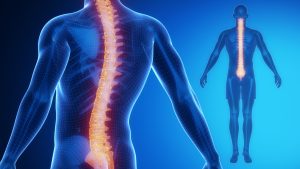Scoliosis And Deformity Treatment

Thoracolumbar and pelvic surgery for deformity and scoliosis:
In the last decade, neurosurgeons have taken the lead in not only nerve and spinal cord decompression but correction of adult deformity. Deformity may occur from recent or remote trauma; falling forward progressively into “kyphosis” due to infection, trauma, cancer, or other causes; progression of rheumatologic disorder, e.g., due to rheumatoid arthritis; progression of congenital disorders, such as Becker’s muscular dystrophy; development of abnormal fractures in the setting of ankylosing spondylitis; acceleration or progression of adolescent scoliosis; or, development of abnormal curvatures from prior surgery. Combining the skill sets of complex neurosurgery and complex orthopedic scoliosis correction, we are able to provide a wide array of correction options tailored to each patient. Some options include:
1. Custom recommended bracing
2. Anterior cervical and lumbar corpectomies and anterior releases
3. Posterior transpedicular kyphectomies
4. Pontes and Smith-Peterson osteotomies
5. Posterior en bloc spondylectomies
6. De-rotation of vertebral bodies
7. Coronal deformity correction
8. Expandable cage technology
9. Vertebral augmentation of instrumentation for osteoporosis
Patients who are preparing for scoliosis surgery undergo a rigorous preoperative evaluation, including cardiac clearance, GI emptying studies, pulmonary function testing, endocrine and rheumatologic evaluation.
Postoperatively, patients spend anywhere between 5 days to 30 days in hospital care. Some patients’ surgery will be staged over days. Classically, an Intensivist, a Hospitalist, a critical care specialist, a pain management specialist, and a physiatrist will also be involved in the patient’s hospital care. It does take a village to help a patient with scoliosis regain his or her life.

